
There was a dream that Dublin could have a new children’s hospital, built to contemporary design for medical excellence.
A site was acquired but it would be many years later before the doors could open.
The storyline may sound familiar, but this saga starts with the vision of a former Dublin Catholic archbishop, Edward Byrne, in the 1930s. He went on to acquire land in Crumlin for such a hospital and passed it over to a board to make his dream a reality. Having worked as a curate in the inner city, he was very aware of poverty’s toll on families and, living with Parkinson’s disease, he had personal experience of the burden of ill-health.
It was 16 years after Byrne’s death (in 1940 at the age of 67), that his successor and chairman of the hospital planning board, Archbishop John Charles McQuaid, finally got to bless the new building. The project cost the Hospitals’ Trust Fund (financed by the Irish Sweepstakes) “not less than £1,240,00″, said the minister for health, Tom O’Higgins, at the official opening of Our Lady’s Hospital for Sick Children on November 21st, 1956, as reported by The Irish Times. The minister also said that the entrusting of the hospital to the care of the Sisters of Charity of St Vincent de Paul ensured that a high standard of efficiency would be maintained, “combined with a spirit of kindness and homeliness that is so specially necessary when the patients are children”.
RM Block
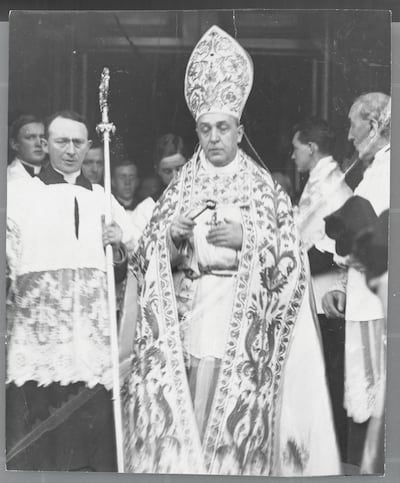
The governance of an institution built with so much public funding had been questioned by a former minister for health, Noël Browne. In a letter to this paper in May 1956, he said he wished to make it clear that he had considered the possibility of making the hospital “subject to proper public or democratic control”. However, he had been informed that an “irrevocable agreement” had been made in the 1930s between Byrne and the then minister for local government and public health, Seán T O’Kelly, so it was McQuaid and the nuns who presided over the new voluntary hospital.
“We called them the French Sisters of Charity,” says Gertie McCormack (née O’Neill) who was among the first small group of non-religious nurses recruited for the new hospital. “They had the big butterfly hats and we were terrified of them.” A native of Co Leitrim, she had just finished her three-year general nurse training in Mercer’s Hospital in Dublin and was awaiting a midwifery training place when she answered an advertisement for nurses to help open up Crumlin hospital.
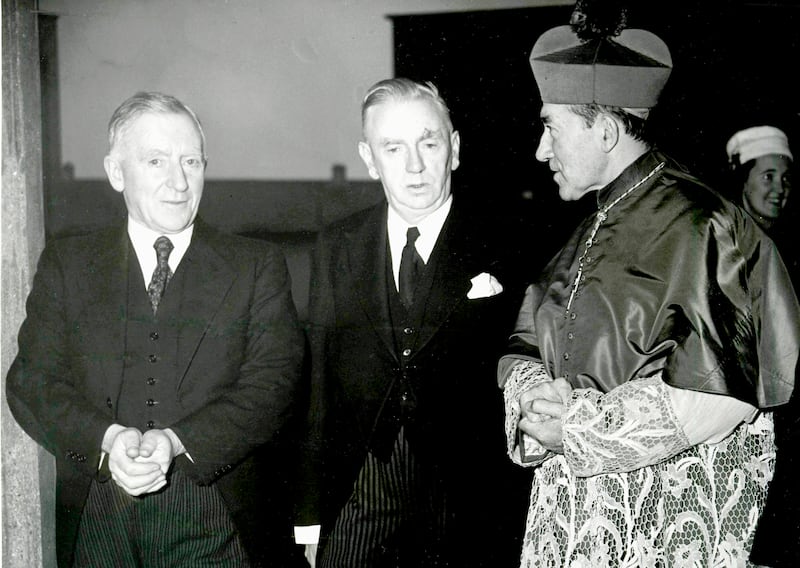
“The hospital was new so, to me, it was fabulous at that time,” recalls Gertie, who will celebrate her 90th birthday later this year. As a theatre nurse, she was working in a “beautifully equipped” facility and it was “very exciting” to be there.
A world apart
These are sentiments sure to shared when another generation of nurses finally starts work in the new state-of-the-art national children’s hospital, to which Crumlin and the city’s other two paediatric hospitals will move, possibly in early 2025.
In every other respect, the nursing profession and life in general is a world apart from the time Gertie started her first job as a nurse.
It was basic theatre work, she says, having been trained “to count the swabs and count the instruments”. But “I was somebody now; before this, I was a dogsbody. You had a responsible job and did it as best you could. You got told off if you didn’t do something right.”
Every surgeon had a different way of doing things. “I remember having a notebook and writing down the instruments that he would use and would refer to it, just to make sure I had it right.”
[ New children’s hospital to open by early 2025 ‘at the latest’, says VaradkarOpens in new window ]
What did annoy her was the fact that there was a junior nun in the theatre just starting out on her training, but she was the one who held the keys to cupboards storing drugs and other important items. “So if a surgeon wanted morphine, say, you would have to go to this junior nurse. These were the things that upset me, because I was the one who was qualified.”
You wouldn’t be able to function in the morning if you didn’t have a good night’s sleep, according to the powers that be. There was no social life. Sure where would you go?
— Gertie McCormack
Living in single rooms on-site, with meals provided, life was all work and no play, with little camaraderie among her nursing colleagues, as she recalls. They had to be in their rooms by 10pm each night, unless they had a special pass. “You wouldn’t be able to function in the morning if you didn’t have a good night’s sleep, according to the powers that be. There was no social life. Sure where would you go?”
If you went into the city, you could not afford a taxi back on a weekly wage of about £3, as she recalls. She cycled everywhere and, when she had two days off in a row every fortnight, would take her bike on the train home to Co Leitrim.
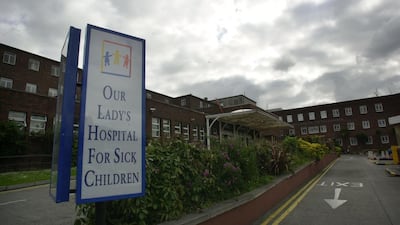
The nuns lived in a separate accommodation block, she didn’t know quite where. “They just appeared; you never knew very much about them. Unless you had to go to the matron’s office and then she would sit stern across the desk, with big wings on her, and terrorise you.
“They were very strict; everywhere was scrubbed by the staff. There were cleaners who came in to do the floors and the basics, but when it came to cleaning the lockers and the children – all that was the nurses’ job. We did everything: you dealt with the families, you dealt with the children’s sick, their tears... ”
Busy and exhausted
At that time, parents did not stay in hospitals with their children. They were allowed to visit, but only for short times as the belief was it upset the children. Gertie remembers parents looking in on their children from behind a glass panel.
“We would have educated the children that their parents were coming; that they were going to see them; that they were going to go home and come back for them.”
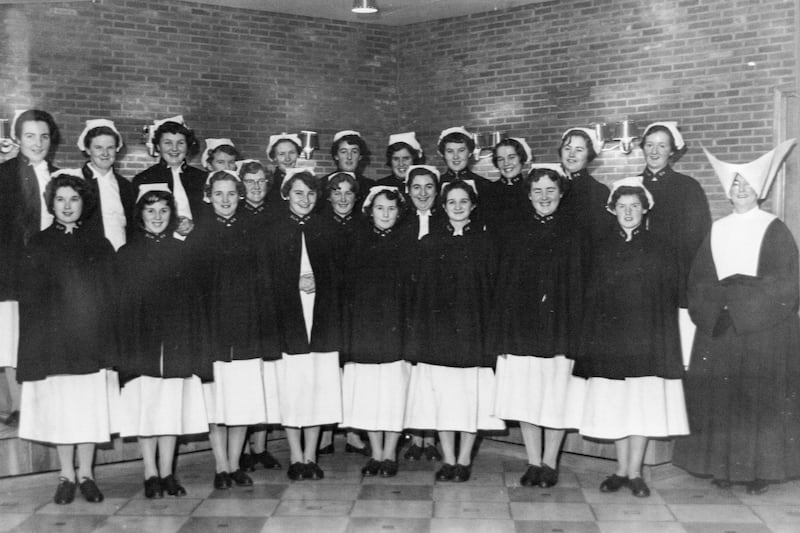
Looking back, it was very hard on the children, she agrees, but it was how things were done, until a group of mothers formed an advocacy organisation in 1970 for the wellbeing of hospitalised children. That work continues to this day, under the name Children in Hospital Ireland.
One of Gertie’s abiding memories of the new hospital building is walking the interminably long corridors. “An e-scooter would have been a gift,” she jokes. The days flew by because she was busy and exhausted afterwards, being on duty from 8am until about 6pm in theatre, unless a later emergency came in. “If it did, you were expected to be there.”
The dress had to be down well below your knees, because if you had to stoop on the bed, your suspender belt would have been seen and that was a crime
— Gertie McCormack
Uniform was a white dress with a crest and a hat, worn, with stockings (tights only started to outsell stockings in the 1970s) and black shoes. “You had an apron for dirty jobs.”
The necessity of keeping the uniform immaculate had been drilled into her at Mercer’s, where trainee nurses wore a blue dress with high collar, long sleeves and plastic cuffs, purchased in Pim’s department store on South Great George’s Street. “There were buttons on the collar, front and back, and we had a hat that had to be made up perfectly, black stockings and black shoes. The dress had to be down well below your knees, because if you had to stoop on the bed, your suspender belt would have been seen and that was a crime. If there was a ladder in your stocking or a button missing off your collar or cuffs, you lost your day off. We had only two days off in the month.”
Always intending to pursue midwifery, Gertie’s time in Crumlin was relatively short as she was accepted into the Holles Street hospital training programme the following year. After three months there, you had to go out on your bike and start delivering babies in the community, she says. This might involve sitting for a day or two in a house in one of the newly built Ballyfermot estates, waiting for the birth.
“You had no relief. It was tough, but we didn’t know any different.”
Fighting over deliveries
Medical students and trainee midwives were fighting over going out to deliveries as both had to complete a certain number of home births before they could sit their exams. “You had to prove you were good at this work. I was training and alone, but I had backup from the hospital if I needed it.”
The “flying” ward sister had a car and would check in on trainees, but if they were in trouble they had to ring the hospital. Long before the day of mobile phones of course, this meant going to the nearest public phone box, or dispatching somebody else to make the call, as house phones were yet to be installed in these estates. “And you had to have the money to put into it because nobody else was going to give it to you.”
As Gertie reminisces about very different times, the sleek Sligo to Dublin train whooshes by right outside the window. Her home is the former Newtownforbes station house, 7km outside Longford town. She and her husband John, who brings in tea midway through the interview, bought it in the 1960s after the station closed. They turned the house around so it now backs on to the tracks.
Gertie had come to Longford in 1959 to work as a staff nurse in St Joseph’s County Home, which did a mix of geriatrics, paediatrics and general hospital care, straight after finishing her midwifery training. “They couldn’t get midwives in the county towns, nobody wanted to do it – it was primitive, let me tell you.”
She was delighted with her permanent, pensionable job and was able to cycle back and forth from her Co Leitrim family home, 16km away. “I was made up. [Then] what happened? I got married in 1961 and I had to resign on marriage.”
The marriage bar wasn’t lifted until the 1970s and Gertie took up a permanent job again in 1979. However, she worked most of the time in between in a full-time, temporary capacity but with no pension as St Joseph’s was redeveloped. Doing nights suited her while she raised five children, four of whom still live in the area while one daughter is in Dublin. There are 12 grandchildren between them.
As the building of the national children’s hospital in the grounds of St James’s Hospital in Dublin nears completion, at a cost of €1.4 billion and rising, Gertie muses over the passing of time since her days of being a theatre nurse in Crumlin. “To think it was such a fabulous new hospital and in the 60 [plus] years since it is obsolete and I am still standing. It is unbelievable.”
A futuristic hospital
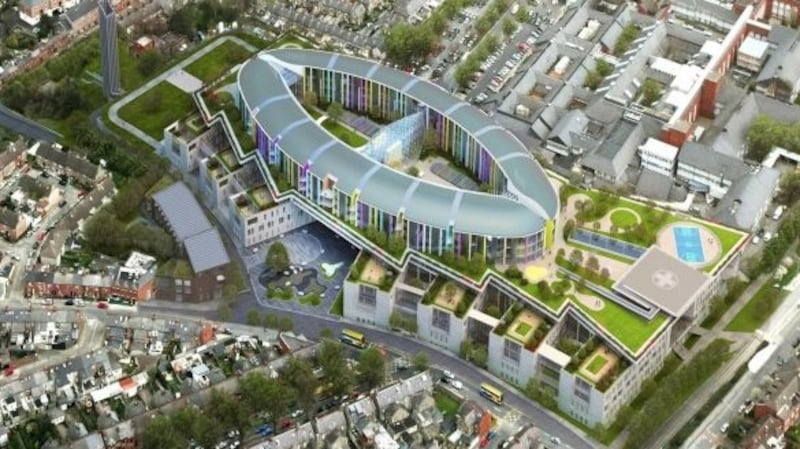
Cutting-edge technology will underpin healthcare and housekeeping at the new national children’s hospital. From the latest in medical equipment and electronic patient records, to robotic vehicles delivering laundry and meals, and an “edu-tainment” tablet computer on the wall of every patient’s room.
“We are moving to a digital hospital,” says Tracey Wall, clinical transformation lead for Children’s Health Ireland (CHI), with responsibility for moving the clinical teams safely from the four current CHI sites in Crumlin, Temple Street, Tallaght and Connolly in Blanchardstown to their new shared home in the grounds of St James’s Hospital, Rialto. They will occupy 12 acres (equivalent to six soccer pitches) of that 50-acre campus. She and her team are working towards March 2024 for the handover of the seven-storey complex from the builders to the commissioning team to begin setting it up.
[ National Children’s Hospital timelineOpens in new window ]
A former director of nursing at the Crumlin hospital, Wall explains the plan is to move one hospital at a time. Once the transfer process starts, she expects it to be completed within a matter of weeks.
Mini robots, known as automated guided vehicles (AGVs), will be working in the background at the hospital, not in public areas. They will transport supplies, such as linen, general stock, consumables and patients’ meals, up and down the back lifts
“I think we’ll stop the city for a period of time because we will be coming from Crumlin, Temple Street and Tallaght, and it will be a monumental piece of work. We need to make sure we do it in a very planned, sequential way.”

From day one, digital health records will be introduced for every patient. Wall describes this as “one source of the truth for their healthcare journey”, which healthcare professionals will be able to access from anywhere in the hospital. “It cuts out ‘where’s the chart?’ and having to leave one clinical area of the hospital to check anything.” There will also be a “my chart” patients’ portal, where they and their families can access their own healthcare record and through which they and staff can communicate.
Mini robots, known as automated guided vehicles (AGVs), will be working in the background at the hospital, not in public areas. They will transport supplies, such as linen, general stock, consumables and patients’ meals, up and down the back lifts and will be “intuitive to the areas they need to go”, she explains. Each clinical area will have a holding bay to which the AGVs will travel, sending an automatic message to, say the catering assistant if it is carrying food, to announce its arrival. “It is phenomenal; they are small little things and they are real nippy. This sort of technology and advancement means our resources can be better utilised to care for the children and we are really excited about that,” says Wall.
The whole edifice has been designed to the ethos of “nature and nurture”. It incorporates 14 gardens and inner courtyard spaces, with trees already planted as construction finally nears completion. She regards the breathing space these offer amid an acute hospital setting as vital for the staff, as well as the patients and their families. The majority of wards are curved – less daunting for children than long straight corridors – with each of the 380 beds housed in single, en suite rooms. All will be equipped with a tablet computer that can be used by the patient/parent for both entertainment and education (eg health information or school work) or simply to order from the hospital menu. All the rooms have natural light and, apart from the 60 intensive care rooms, all will have a second bed for a parent.
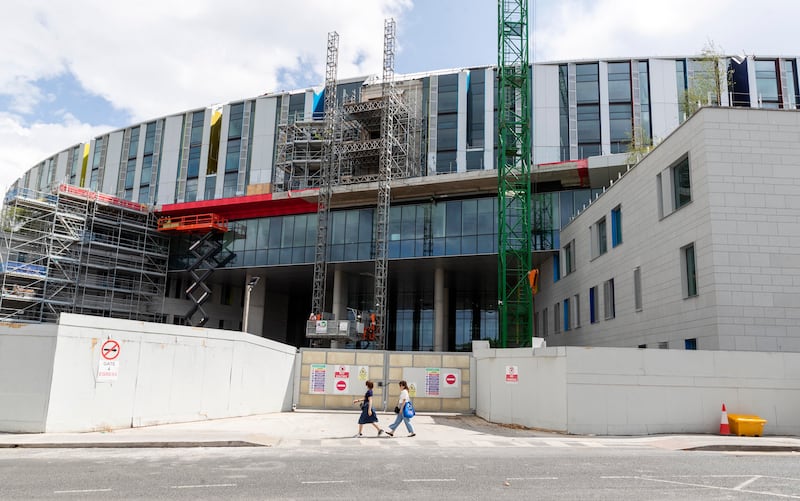
A separate parents’ hub in the hospital consists of 25 bedrooms, along with kitchen, laundry, exercise room and desk space. Across the road from the hospital entrance, there are plans to have a 52-bedroom Ronald McDonald house for patients’ families, linked by a tunnel to the main hospital concourse. Nursing staff at the four CHI sites are already dressed for the move. At the start of this year, they swapped their own hospital’s uniforms for the one chosen for the consolidated institution. A fitted tunic over trousers, they are colour-coded to represent the grades across nursing.
[ New children’s hospital to break fresh ground in digital healthcareOpens in new window ]
The hospital theme of “nature and nurture” is reflected in images of Irish animals, such as a wolfhound or stag, on the tunic pockets, each grade having chosen a different animal. This has a practical as well as decorative function because nurses use it to distract children. From trousers and a “space-age” setting, to a graduate-entry nursing profession with a great variety of advanced specialist roles not only in clinical practice but also in healthcare management and academia, it is a very changed world indeed since Gertie McCormack took up her job in the brand new Crumlin children’s hospital nearly 70 years ago.



















